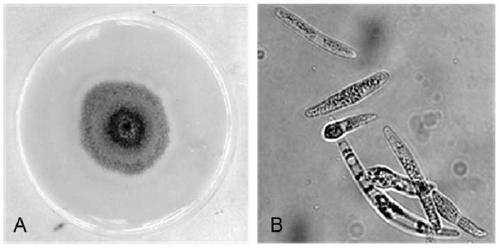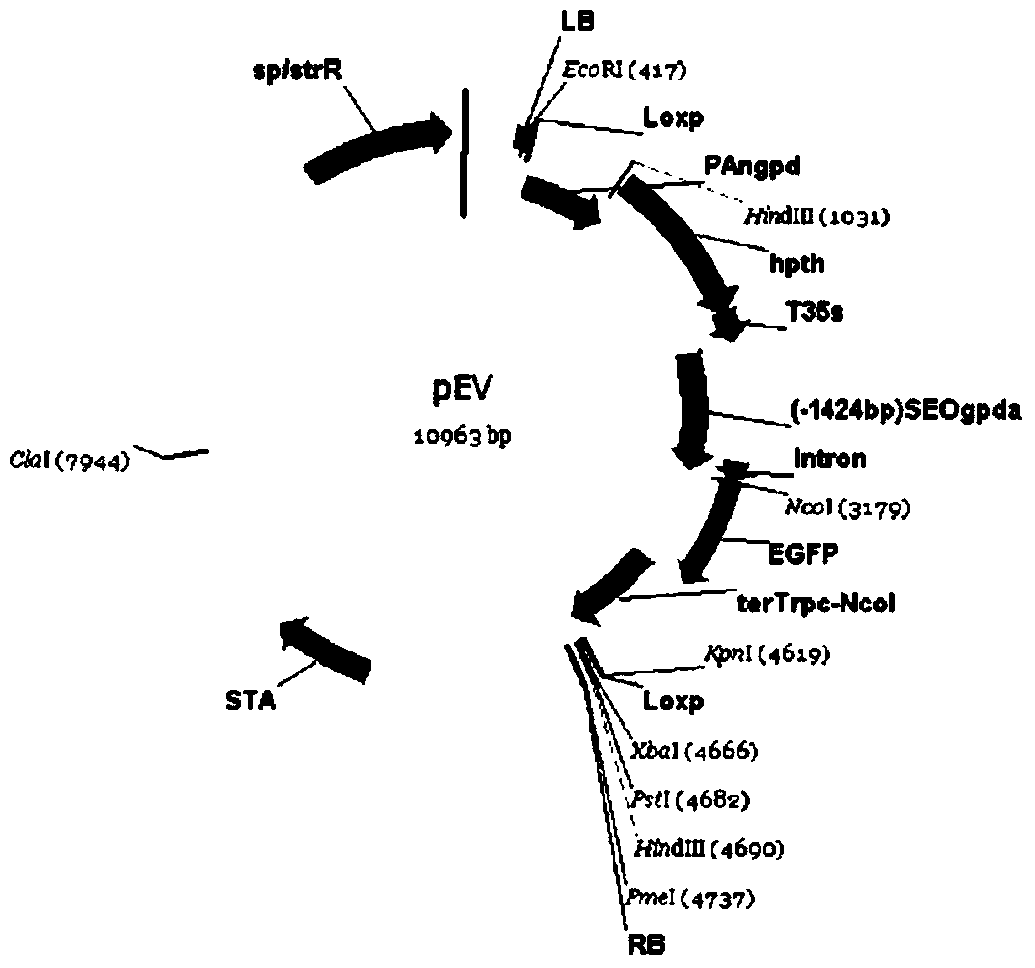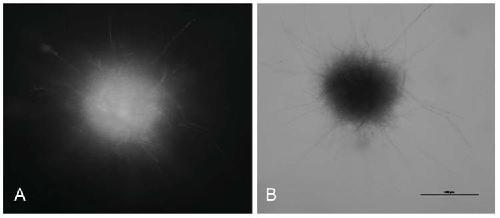Genetic Transformation Method of Agrobacterium Tumefaciens Mediated by Agrobacterium tumefaciens
A genetic transformation method, technology of Agrobacterium tumefaciens, applied in biochemical equipment and methods, botany equipment and methods, fermentation, etc.
- Summary
- Abstract
- Description
- Claims
- Application Information
AI Technical Summary
Problems solved by technology
Method used
Image
Examples
Embodiment 1
[0019] Embodiment 1 Obtaining of water chestnut stem blight bacteria T-DNA insertion transformants
[0020] 1> Preparation of conidia of water chestnut stem blight (all operations are carried out under sterile conditions)
[0021] Bacteria spp. on potato-dextrose-agar (PDA) medium ( figure 1 A) After cultivating for 15-20 days, scrape off the conidia of the water chestnut stem blight bacteria with sterilized deionized water, then filter and remove the mycelia with sterile mirror paper, and use the water chestnut stem blight bacteria conidia filtrate obtained Deionized water adjusted to a concentration of 10 5 -10 8 Spores / ml, to obtain the conidia of the water chestnut blight ( figure 1 B) The suspension is ready for use.
[0022] 2> Preparation of carrier-containing Agrobacterium
[0023]Utilize carrying green fluorescent protein gene eGFP and hygromycin resistance screening gene hpth( figure 2 ) is the transformation vector, and the plasmid pEV vector is transformed i...
Embodiment 2
[0028] Example 2 Identification of transformant of water chestnut stem blight
[0029] 1> Fluorescence microscope identification
[0030] The colonies of the transformants of P. chinensis blight were placed under a fluorescence microscope to observe the fluorescence. Fluorescence was not detected in the wild type of P. chinensis, and the transformants transformed with Agrobacterium glowed green under the ultraviolet excitation light of the fluorescence microscope, which proved that the green fluorescent protein GFP of Agrobacterium had been successfully transferred to and expressed in P. chinensis. ( image 3 ).
[0031] 2) PCR verification
[0032] Primers hpth-F: GCGTGGAGAAGTTCCTCATCGAGA (SEQ.ID.No.2) / hpth-R: GAGCCTTGGGCTTCCAGCAA (SEQ. ID.No.3) Carry out PCR amplification on the transformants to preliminarily verify whether a mutant with an insertion is really obtained.
[0033] Composition of PCR reaction solution (25 μL system): Add 2.5 μL 10×PCR Buffer, 2.0 μL 2.5 μm...
PUM
 Login to View More
Login to View More Abstract
Description
Claims
Application Information
 Login to View More
Login to View More - R&D
- Intellectual Property
- Life Sciences
- Materials
- Tech Scout
- Unparalleled Data Quality
- Higher Quality Content
- 60% Fewer Hallucinations
Browse by: Latest US Patents, China's latest patents, Technical Efficacy Thesaurus, Application Domain, Technology Topic, Popular Technical Reports.
© 2025 PatSnap. All rights reserved.Legal|Privacy policy|Modern Slavery Act Transparency Statement|Sitemap|About US| Contact US: help@patsnap.com



